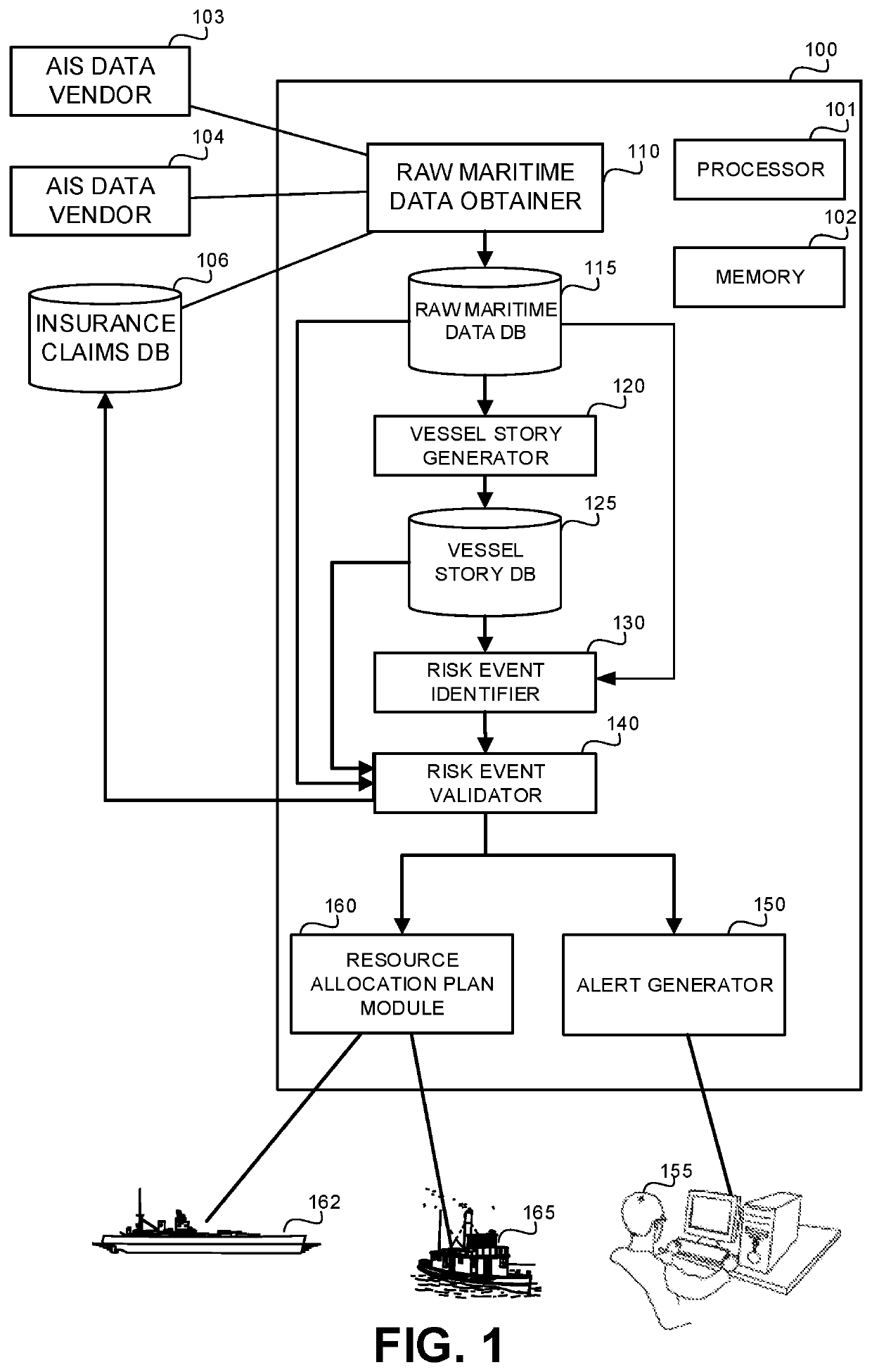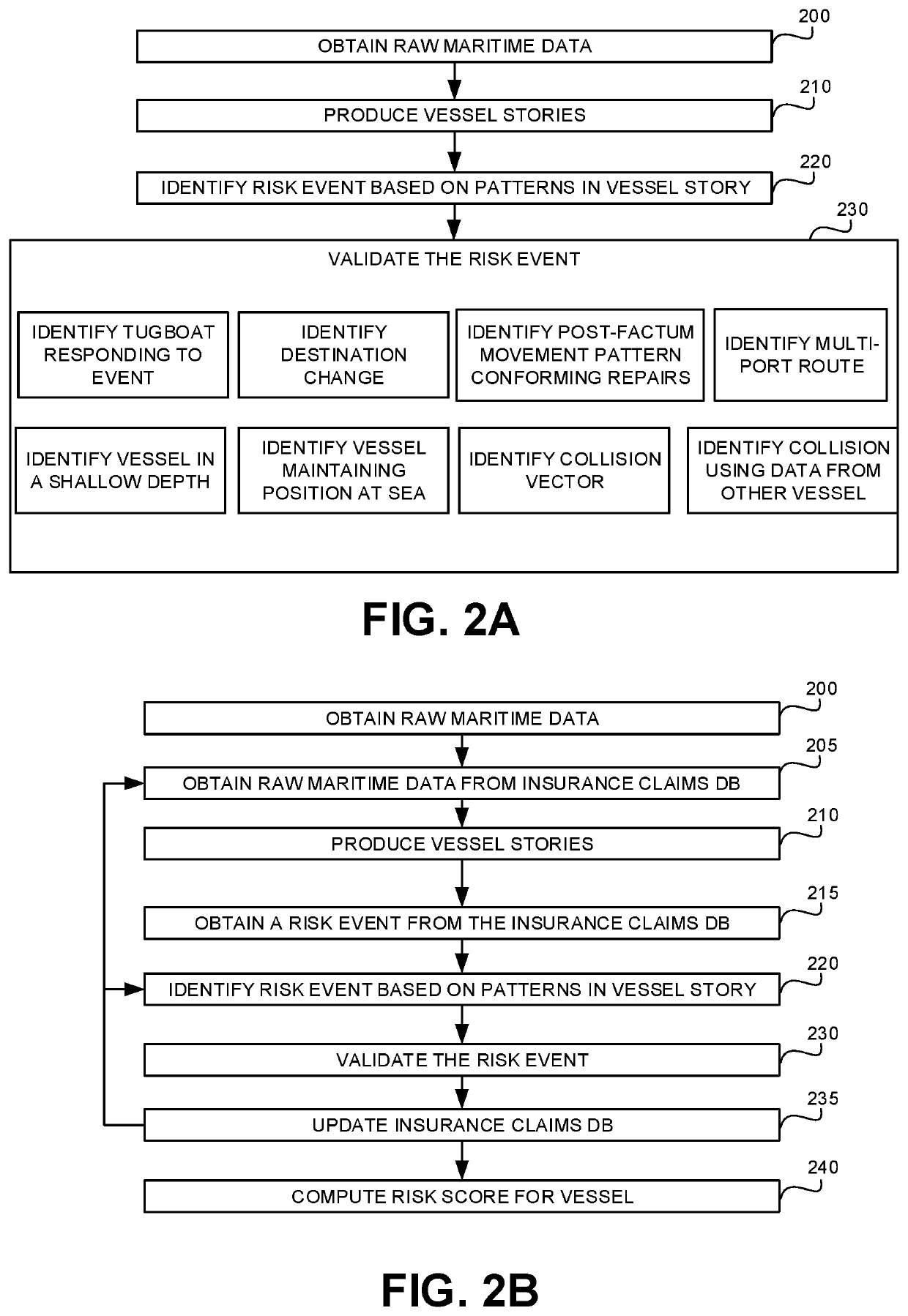Risk event identification in maritime data and usage thereof
a risk event and data technology, applied in the field of data analysis, can solve the problems of difficult deciphering and large-scale use of is data, and achieve the effect of increasing false positive metrics
- Summary
- Abstract
- Description
- Claims
- Application Information
AI Technical Summary
Benefits of technology
Problems solved by technology
Method used
Image
Examples
example
(5)
[0111]Consider the activity of a name change at sea. In order to deduce such activity for a vessel, a first activity of a ship A stopped transmitted at location X and a second activity of a ship B (with that changed name) started transmitting at location X may be determined and used to generate the name change activity. In some cases, the two activities may be at different locations where the distance therebetween is consistent with the travel time of that single vessel. Additionally or alternatively, it may be verified that both ship A and ship B have the same characteristics, such as type of vessel, draught information, or the like.
[0112]In some exemplary embodiments, Vessel Story Generator 120 may create the activities, and then, for every vessel, the raw data is transformed into a vessel story that is retained in Vessel Story Database 125. A Vessel Story User Interface (not shown) may graphically display the path of the vessel. On it, the vessel story may be presented by show...
PUM
 Login to View More
Login to View More Abstract
Description
Claims
Application Information
 Login to View More
Login to View More - R&D
- Intellectual Property
- Life Sciences
- Materials
- Tech Scout
- Unparalleled Data Quality
- Higher Quality Content
- 60% Fewer Hallucinations
Browse by: Latest US Patents, China's latest patents, Technical Efficacy Thesaurus, Application Domain, Technology Topic, Popular Technical Reports.
© 2025 PatSnap. All rights reserved.Legal|Privacy policy|Modern Slavery Act Transparency Statement|Sitemap|About US| Contact US: help@patsnap.com



